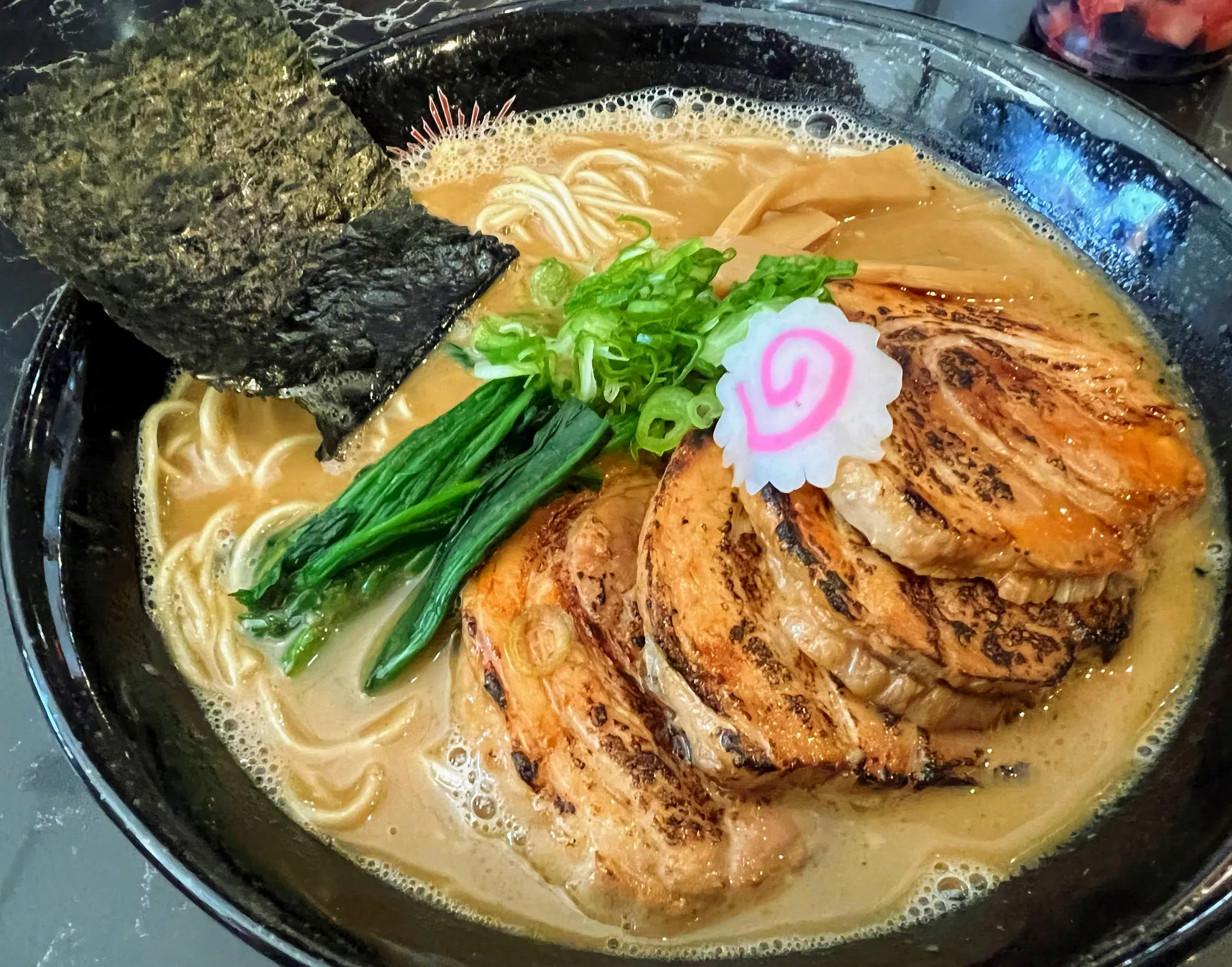
Ramen Shack
For a fleeting moment, Orange County's best ramen came from a small shop in San Juan Capistrano
From the moment it opened, San Juan Capistrano’s Ramen Shack was like a snowflake – an undeniably beautiful organic creation that seemed destined to disappear for reasons unrelated to the quality of its food. Today, more than two years after the Japanese noodle shop closed, the loss still feels raw.
To be clear, Orange County has had excellent ramen options for decades, with Shin-Sen-Gumi Hakata Ramen setting the bar for made-in-Japan-level authenticity back in 2000. Ramen Shack was a different story: A ramen shop made in America by Keizo Shimamoto, a Japanese-American obsessed with every conceivable nuance of the ramen experience, from subtleties of noodle texture and broth seasonings to plating and interior decor. Before relocating to Orange County, Shimamoto deservedly achieved fame in New York City, establishing the original Ramen Shack and a ramen noodle company.
In NYC, Ramen Shack didn’t simply clone one or three Japanese ramen styles. Like ramen masters across Japan, Shimamoto took elements from countless ramen dining and preparatory experiences, remixed them, and polished them into unimpeachably great bowls with different flavors and ingredients. He also invented the Ramen Burger, which quickly went viral on social media and became a hit at weekend Smorgasburg food gatherings, then was ripped off (poorly) at other food festivals.
The Ramen Burger wasn’t on the day one menu at San Juan Capistrano’s Ramen Shack, which made the regrettable mistake of opening in a space that was too small to accommodate Shimamoto’s capabilities and the crowds they would generate. Unlike Japan, where 10-seat ramen shops persist for decades thanks to lines of patient and hungry but not desperately hungry guests, guests were deterred by the heat and inconvenience of waiting for a table in sunny San Juan Capistrano – not exactly the local center of demand for Japanese food. Even so, superfans showed up to support Ramen Shack and enjoy as many of Shimamoto’s bowls as they could eat or freeze before the place inevitably closed. It was phenomenal as a restaurant, but not sustainable at that location as a business.
Despite the obvious challenges of operating in a location with too little kitchen and seating space, Ramen Shack’s menu did as much as it could to offer a consistently high-quality spectrum of ramen variety and authenticity. Every bowl was delicious and beautiful, generally riffing on either tonkotsu (pork broth) or shoyu (here, chicken soy broth) styles, with sliced pork and seaweed as near constants, various onion, spinach, chili and/or spice powder, bamboo shoot, and garlic elements appearing as appropriate to a given order. Thick green curry and “ganja-style” tsukemen dipping noodles also appeared at times.
This isn’t to say everything was perfect for guests inside Ramen Shack. Launched in the pandemic’s wake, the restaurant’s digital ordering service model and service were not fantastic – an afterthought at best – so after a long wait, the reward wasn’t deep hospitality beyond the opportunity to have a seat and eat some delicious food. As with many old school ramen shops in Japan, Ramen Shack had little interest in encouraging people to linger and enjoy themselves, so the modern-looking dining room was there to turn out noodles and churn through guests, both of which it did ably but without much charm.
Shimamoto’s Ramen Burger briefly appeared on the restaurant’s menu, then made a one-day, limited quantity appearance at a collaboration between Ramen Shack and nearby San Juan Capistrano neighbor Heritage Barbecue. Hundreds of people lined up to try the authentic ramen buns paired with Heritage’s smoked brisket patties, arugula, shoyu, and scallions, a clear demonstration of pent-up local interest in the invention. Yet one month later, Ramen Shack announced that it was closing – in part due to Shimamoto’s health concerns.
Even though it opened in a region with literally a thousand other noodle shops as competitors, Ramen Shack truly stood apart for all the right reasons. While it wasn’t perfect, doomed as much by its size as its location, we admired its special balance of authenticity and originality, as well as its focus on high quality across all of its offerings. We wish, but do not expect, that it might rise again elsewhere in Orange County.
The former Ramen Shack space has become Breezy, a brunch restaurant serving Asian- and Hawaiian-inspired breakfast foods.
Stats
Price: $$
Service: Limited table
Open Since: 2021
Closed: 2022
Addresses
31761 Camino Capistrano
San Juan Capistrano, CA 92675
Instagram: @ramenshacknyc
